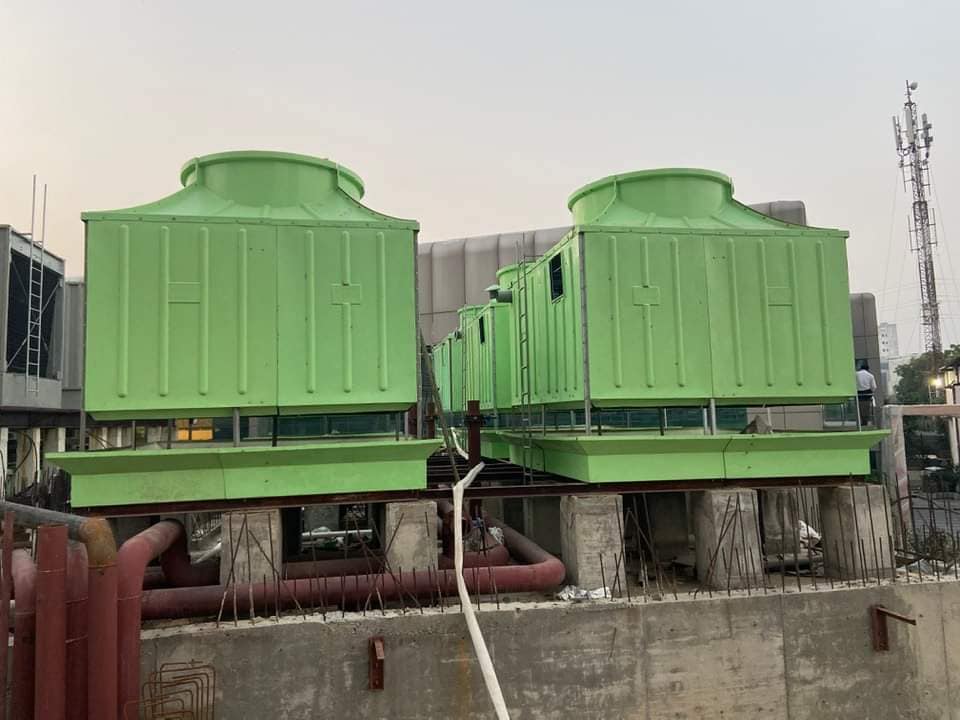Dry Cooling Tower vs. Hybrid Cooling Tower: Key Differences When selecting a cooling system for industrial or commercial applications, choosing between a dry cooling tower (air-cooled) and a hybrid cooling tower (wet + dry) depends on factors like water availability, climate, energy efficiency, and cost . Below is a detailed comparison
. How They Work Feature Dry Cooling Tower Hybrid Cooling Tower Cooling Method Air-cooled (no water evaporation) Combines dry + wet cooling Water Usage Zero water consumption Low-to-moderate (wet mode only when needed) Heat Rejection Less efficient (relies on air only) More efficient (wet cooling boosts performance) Operation Modes Always dry Auto-switches: Dry (cool weather) / Wet (peak heat)
2. Key Differences A. Water Consumption
Dry Cooling Tower: No water used – Ideal for water-scarce regions.
Disadvantage: Lower cooling efficiency in hot climates.
Hybrid Cooling Tower: Uses water only when needed (wet mode in high heat).
Saves 20–50% water vs. full wet cooling towers.
B. Energy Efficiency
Dry Cooling Tower: Higher fan energy consumption (needs more airflow for cooling).
Best in cold climates where air cooling is sufficient.
Hybrid Cooling Tower: More energy-efficient in hot weather (wet mode improves cooling).
Fan energy savings in dry mode (compared to wet-only towers).
C. Performance in Different Climates Climate Dry Cooling Tower Hybrid Cooling Tower Hot & Dry Poor (air cooling inefficient) Excellent (wet mode activates)Cold Best (no freezing risk) Good (operates in dry mode) Humid Moderate (depends on airflow) Better than dry-only
D. Maintenance & Lifespan
Dry Cooling Tower: Less maintenance (no water treatment, scaling, or algae risk).
Longer lifespan (no corrosion from water exposure).
Hybrid Cooling Tower: Moderate maintenance (wet section needs water treatment).
Higher upfront cost but balances water/energy savings.
E. Cost Comparison Factor Dry Cooling Tower Hybrid Cooling Tower Initial Cost Lower Higher (more complex design) Operating Cost Higher (energy-intensive) Lower (optimizes water/energy) Water Cost Savings 100% 50–80% Best for Budget? If water is expensive If balancing water + energy costs
3. When to Choose Which? Choose a Dry Cooling Tower If:
Water is extremely scarce or banned. Climate is cold or moderate (no extreme heat waves).Low maintenance is a priority (no water treatment).Budget is limited (lower upfront cost).
Industries:
Data centres (water-restricted areas)
Small HVAC systems
Geothermal plants
Choose a Hybrid Cooling Tower If:
Water conservation is important, but some usage is allowed. Climate has hot summers & cold winters. Energy efficiency is critical (reduces peak power demand).Regulations limit water consumption or thermal pollution.
Industries:
Power plants (combined cycle, solar thermal)
Steel & chemical plants
4. Summary: Which is Better? Aspect Winner Reason Water Savings Dry (100%)Uses no water Energy Efficiency Hybrid Optimizes wet/dry modes Hot Climate Performance Hybrid Wet mode boosts cooling Cold Climate Performance Dry No freezing risk Maintenance Dry No water treatment Cost Over Time Hybrid Balances water + energy savings
Final Recommendation
For deserts & zero-water policies → Dry cooling tower. For variable climates & sustainability → Hybrid cooling tower.
